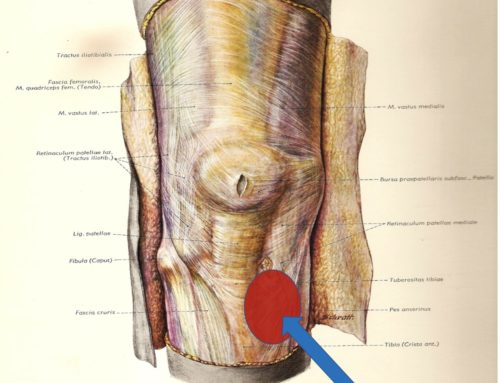Iliopsoas bursitis: Hip Bursitis, Hip Pain and Iliopsoas Tendonitis

The iliopsoas muscle is the primary hip flexor of the hip. The iliopsoas tendon is created by the jointing of the psoas and iliacus which crosses the hip joint, making the iliopsoas a primary hip flexor. The iliopsoas bursa or iliopectineal bursae reduces friction between the iliopsoas tendon and the anterior hip capsule. Repetitive mechanical stress around the bursa or tendon can cause inflammation, resulting in bursitis and tendonitis. Bursitis and tendonitis can also be caused by arthritis creating anterior hip joint pain and groin pain.
Causes
Bursitis involving hip flexors is common in sports events such as uphill running due to the large compression on the iliopsoas bursa. Enlarged bursa or bursitis can also be the result of arthritis that creates a pinching effect on the iliopsoas bursa and hip. When bursitis develops under the iliopsoas tendon hip flexor pain, tendonitis, and iliopsoas tendon “snapping” can occur.
Hip and groin bursitis common sports:
- Hockey
- Running
- Ballet
- Kicking sports (soccer)
Symptoms
Hip pain and groin pain are the primary symptoms associated with bursitis. Pain can sometimes refer down the front of the femoral thigh, groin, buttocks and mimic trochanteric bursitis.
Other symptoms include:
- Pain with contraction of the hip flexors such as running, walking, and climbing stairs
- Tenderness and pain with palpation around the groin and hip
- Painful snapping sensation in the hip
Treatment
To treat bursitis in general the first step is to modify exercises or activities that are provoking for 2-4 weeks.
Traditional treatments include:
- Over the counter NSAIDs such as ibuprofen
- Corticosteroid injections that are ultrasound-guided can provide quick relief, but bursitis often returns.
Conservative treatment:
- Manual pumping of the iliopsoas bursa to help circulate fluid
- Fascial release of Adductors and hip flexor muscles including the psoas
- Femoral nerve flossing
- Pelvic leveling exercises such as dead bug to prevent tilting of the pelvis
GET IN TOUCH WITH DR. DEAN
YOU should be able to move the way you’d like to move without experiencing pain. YOU should be able to experience freedom and energy knowing there’s nothing holding back from giving your life 110%. Dr. Dean would like to learn more about your challenges with a quick phone or email before beginning treatment. Contact him today.


